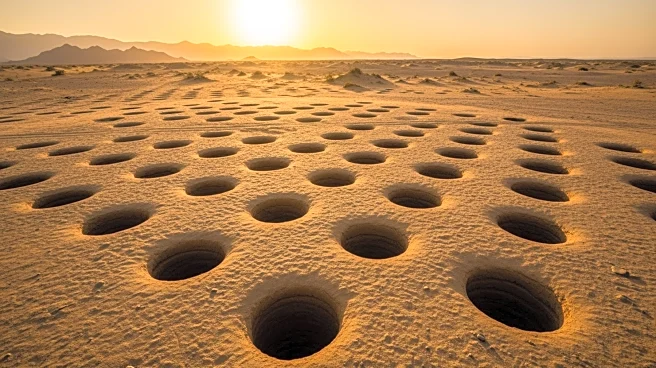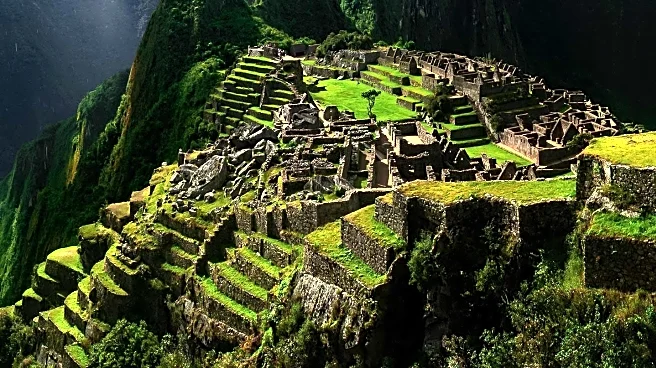What's Happening?
Archaeologists have made significant progress in understanding the purpose of 5,200 ancient holes at Monte Sierpe in southern Peru. Recent research suggests these holes were initially part of a thriving
pre-Inca marketplace and later served as an Inca accounting system. The study, led by Jacob Bongers from the University of Sydney, utilized sediment analysis, drone mapping, and radiocarbon dating to uncover plant materials such as maize and quinoa within the pits. These findings indicate the site was used for trade and later repurposed by the Inca for administrative purposes, resembling the khipu system of knotted strings used for record-keeping.
Why It's Important?
This discovery provides new insights into the economic and social structures of pre-Inca civilizations, challenging previous assumptions about the region's history. The transformation of Monte Sierpe from a marketplace to an accounting system under the Inca Empire highlights the adaptability and complexity of ancient societies. Understanding these systems offers valuable perspectives on the development of trade, taxation, and governance in pre-Columbian Peru. The findings also contribute to broader archaeological knowledge, emphasizing the importance of interdisciplinary approaches in uncovering historical narratives.
Beyond the Headlines
The research raises questions about the uniqueness of Monte Sierpe and its role in the Andes. The site's function as a 'landscape ledger' suggests innovative uses of natural landscapes for economic and administrative purposes. This perspective underscores the ingenuity of ancient civilizations in integrating practical and symbolic elements into their infrastructure. Further studies are planned to explore the site's connection to known khipus and to unravel more of its secrets, potentially offering deeper understanding of pre-Columbian trade and communication systems.












